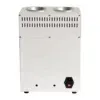 English
English



-
 Afrikaans
Afrikaans -
 Albanian
Albanian -
 Amharic
Amharic -
 Arabic
Arabic -
 Armenian
Armenian -
 Azerbaijani
Azerbaijani -
 Basque
Basque -
 Belarusian
Belarusian -
 Bengali
Bengali -
 Bosnian
Bosnian -
 Bulgarian
Bulgarian -
 Catalan
Catalan -
 Cebuano
Cebuano -
 China
China -
 China (Taiwan)
China (Taiwan) -
 Corsican
Corsican -
 Croatian
Croatian -
 Czech
Czech -
 Danish
Danish -
 Dutch
Dutch -
 English
English -
 Esperanto
Esperanto -
 Estonian
Estonian -
 Finnish
Finnish -
 French
French -
 Frisian
Frisian -
 Galician
Galician -
 Georgian
Georgian -
 German
German -
 Greek
Greek -
 Gujarati
Gujarati -
 Haitian Creole
Haitian Creole -
 hausa
hausa -
 hawaiian
hawaiian -
 Hebrew
Hebrew -
 Hindi
Hindi -
 Miao
Miao -
 Hungarian
Hungarian -
 Icelandic
Icelandic -
 igbo
igbo -
 Indonesian
Indonesian -
 irish
irish -
 Italian
Italian -
 Japanese
Japanese -
 Javanese
Javanese -
 Kannada
Kannada -
 kazakh
kazakh -
 Khmer
Khmer -
 Rwandese
Rwandese -
 Korean
Korean -
 Kurdish
Kurdish -
 Kyrgyz
Kyrgyz -
 Lao
Lao -
 Latin
Latin -
 Latvian
Latvian -
 Lithuanian
Lithuanian -
 Luxembourgish
Luxembourgish -
 Macedonian
Macedonian -
 Malgashi
Malgashi -
 Malay
Malay -
 Malayalam
Malayalam -
 Maltese
Maltese -
 Maori
Maori -
 Marathi
Marathi -
 Mongolian
Mongolian -
 Myanmar
Myanmar -
 Nepali
Nepali -
 Norwegian
Norwegian -
 Norwegian
Norwegian -
 Occitan
Occitan -
 Pashto
Pashto -
 Persian
Persian -
 Polish
Polish -
 Portuguese
Portuguese -
 Punjabi
Punjabi -
 Romanian
Romanian -
 Russian
Russian -
 Samoan
Samoan -
 Scottish Gaelic
Scottish Gaelic -
 Serbian
Serbian -
 Sesotho
Sesotho -
 Shona
Shona -
 Sindhi
Sindhi -
 Sinhala
Sinhala -
 Slovak
Slovak -
 Slovenian
Slovenian -
 Somali
Somali -
 Spanish
Spanish -
 Sundanese
Sundanese -
 Swahili
Swahili -
 Swedish
Swedish -
 Tagalog
Tagalog -
 Tajik
Tajik -
 Tamil
Tamil -
 Tatar
Tatar -
 Telugu
Telugu -
 Thai
Thai -
 Turkish
Turkish -
 Turkmen
Turkmen -
 Ukrainian
Ukrainian -
 Urdu
Urdu -
 Uighur
Uighur -
 Uzbek
Uzbek -
 Vietnamese
Vietnamese -
 Welsh
Welsh -
 Bantu
Bantu -
 Yiddish
Yiddish -
 Yoruba
Yoruba -
 Zulu
Zulu
Evaluation and Testing Procedures for Power Transformer Performance and Efficiency
Type Test of Power Transformer
Power transformers are crucial components in electrical power systems, responsible for stepping up or stepping down voltage levels to facilitate efficient power transmission and distribution. Conducting type tests on power transformers is essential to ensure their reliability, efficiency, and compliance with industry standards. These tests provide valuable insights into the performance characteristics and operational limits of the transformer, which are critical for ensuring they meet the specified requirements in real-world applications.
Type tests are exhaustive assessments that examine various attributes of a transformer, often mandated by international standards, such as IEC (International Electrotechnical Commission) and ANSI (American National Standards Institute). These tests are typically performed on a prototype of the transformer design before mass production begins. The main objectives are to verify design parameters, performance capabilities, and compliance with safety regulations.
Type Test of Power Transformer
Another essential test is the winding resistance measurement. This test aims to evaluate the resistance of the transformer windings at different temperatures. By calculating the ratio of resistance at room temperature to that at operating temperature, engineers can derive the temperature rise of the windings during operation. Proper winding resistance ensures minimal losses and effective heat dissipation, which are vital for the transformer's longevity and efficiency.
type test of power transformer

The short-circuit and open-circuit tests are among the most critical measurements, providing valuable data on the transformer’s voltage regulation, efficiency, and loss characteristics. The short-circuit test determines the impedance of the transformer and its performance under fault conditions, essentially revealing how it responds when subjected to a sudden increase in load. Conversely, the open-circuit test helps evaluate core losses and the magnetizing current of the transformer when it operates with no load.
Moreover, the temperature rise test is conducted to evaluate how the transformer performs under continuous load conditions. This test simulates real-world operational scenarios and measures the temperature of the windings and other components to ensure they remain within acceptable limits, thus preventing overheating and potential damage.
Another significant test includes the power frequency withstand test, which assesses the transformer's ability to handle voltage spikes and transients. By applying a high-frequency voltage, engineers can identify any potential weaknesses in the insulation system that could lead to failure under extreme conditions.
Finally, the no-load and load loss tests measure the losses incurred by the transformer while operating. Understanding these losses is crucial for calculating overall efficiency and determining operational costs.
In conclusion, type tests of power transformers are vital for validating their operational characteristics and ensuring compliance with established standards. By meticulously evaluating aspects such as insulation resistance, winding resistance, and thermal performance, manufacturers can guarantee that their products are reliable and efficient. Ultimately, these tests provide a comprehensive understanding of a transformer's capabilities, ensuring they can perform their intended functions safely and effectively in the dynamic environment of electrical power systems. Thus, robust testing protocols contribute to the reliability of electrical infrastructure and the overall efficiency of power distribution networks.
-
Testing Equipment Industry Sees Major Advancements in 2025: Smart & Precision Technologies Lead the WayNewsJun.06,2025
-
Applications of Direct Current Generators in Renewable Energy SystemsNewsJun.05,2025
-
Hipot Tester Calibration and Accuracy GuidelinesNewsJun.05,2025
-
Digital Circuit Breaker Analyzer Features and BenefitsNewsJun.05,2025
-
Benefits of Real-Time Power Quality Monitoring Devices for Industrial EfficiencyNewsJun.05,2025
-
Earth Fault Loop Testing in High-Rise Building Electrical SystemsNewsJun.05,2025



